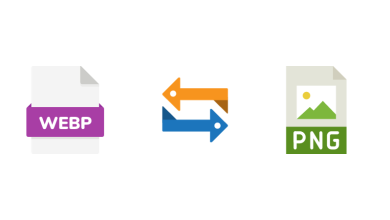
In today’s hiring environment, recruitment automation tools are no longer just a luxury—they’re a necessity. These tools are designed to streamline the hiring process, reduce manual labor, and help companies secure top talent more efficiently. However, simply implementing recruitment automation isn’t enough. To truly maximize their value, you need to understand and track key metrics that reveal the effectiveness of your hiring strategies.
In this article, we’ll explore five essential metrics you should be monitoring to ensure your recruitment automation tools are delivering optimal results.

1. Time to Hire
Understanding Time to Hire
One of the most critical metrics in recruitment is “time to hire,” which measures the amount of time it takes to fill a position from the moment the job opening is posted until a candidate accepts the offer. Recruitment automation tools are designed to speed up this process by automating tasks such as resume screening, candidate communication, and interview scheduling.
Why Time to Hire Matters
In the competitive job market, speed is essential. The best candidates are often off the market within a few weeks, so reducing your time to hire can prevent you from losing top talent to competitors. Additionally, a quicker hiring process can minimize the time and resources spent on recruitment, allowing your team to focus on other essential tasks.
How Recruitment Automation Tools Help
The best recruiting apps equipped with automation capabilities can significantly reduce time to hire by:
Automating Resume Screening: Instead of manually reviewing each application, automated systems can filter resumes based on keywords, experience, and qualifications.
Streamlining Communication: Automated emails and messages ensure candidates are kept in the loop without delay.
Scheduling Interviews: Tools can automatically coordinate interview times between candidates and hiring managers, eliminating back-and-forth emails.
Tracking your time to hire with these tools will give you insights into how well your recruitment process is functioning and where further improvements can be made.

2. Cost Per Hire
Understanding Cost Per Hire
Cost per hire is a metric that calculates the total expenses associated with filling a vacancy. This includes advertising costs, recruiter fees, technology investments, and more. Recruitment automation tools can play a crucial role in reducing these costs by improving efficiency and reducing the need for extensive human resources.
Why Cost Per Hire Matters
For businesses, particularly startups and smaller companies, managing recruitment costs is vital to maintaining a healthy budget. High costs per hire can eat into your profitability, especially if turnover is high or if you’re in a growth phase and hiring frequently. Monitoring this metric helps ensure that your recruitment efforts are cost-effective and sustainable.
How Recruitment Automation Tools Help
Recruitment automation tools help lower cost per hire by:
Reducing Manual Labor: Automation decreases the need for manual tasks, allowing your HR team to focus on more strategic activities.
Improving Advertising Efficiency: Tools can track which job boards and channels deliver the best candidates, enabling you to allocate your budget more effectively.
Enhancing Candidate Sourcing: Automation tools often include features that help you find and engage candidates faster, reducing the time and cost associated with sourcing.
By tracking cost per hire, you can assess the ROI of your recruitment automation tools and identify areas where you can cut costs without sacrificing quality.
3. Quality of Hire
Understanding Quality of Hire
Quality of hire measures the value a new employee brings to the organization. This metric is typically assessed after the employee has been with the company for a certain period and can be based on performance reviews, retention rates, and cultural fit. Recruitment automation tools can enhance the quality of hire by ensuring that only the most suitable candidates make it through the screening process.
Why Quality of Hire Matters
Hiring quickly and cheaply is not beneficial if the quality of hire suffers. Poor hiring decisions can lead to increased turnover, lower productivity, and a negative impact on team morale. By focusing on quality of hire, you ensure that your recruitment efforts contribute positively to your organization’s long-term success.
The best recruiting apps and automation tools can boost quality of hire by:
Leveraging Data-Driven Insights: Automated tools often use AI and machine learning to analyze candidate data and predict their potential performance and fit within the company.
Improving Candidate Assessment: Many tools offer advanced assessment features, such as skill tests and personality quizzes, which can help identify candidates who align with your company’s needs.
Streamlining Reference Checks: Automation can speed up the reference-checking process, ensuring that you have all the necessary information before making a hiring decision.
Tracking the quality of hire over time will help you evaluate the effectiveness of your recruitment process and the long-term impact of your hiring decisions.

4. Candidate Experience
Understanding Candidate Experience
Candidate experience refers to how job seekers perceive and interact with your company during the recruitment process. This includes everything from the application process to communication and the interview experience. Recruitment automation tools play a vital role in shaping candidate experience by ensuring that interactions are timely, professional, and engaging.
Why Candidate Experience Matters
A positive candidate experience not only helps you attract top talent but also strengthens your employer brand. Candidates who have a good experience, even if they don’t get the job, are more likely to speak positively about your company, enhancing your reputation in the industry. Conversely, a poor experience can deter potential candidates and harm your brand.
Recruitment automation tools improve candidate experience by:
Ensuring Timely Communication: Automated responses and updates keep candidates informed about their application status, reducing uncertainty and anxiety.
Simplifying the Application Process: User-friendly platforms make it easier for candidates to apply and navigate the recruitment process.
Personalizing Interactions: Automation tools can customize communication based on candidate data, making interactions feel more personalized and engaging.
By tracking candidate experience metrics, such as satisfaction surveys and feedback, you can continuously refine your recruitment process to better meet the needs of job seekers.
5. Recruitment Funnel Conversion Rates
Understanding Recruitment Funnel Conversion Rates
The recruitment funnel encompasses all stages of the hiring process, from the initial application to the final job offer. Conversion rates measure the percentage of candidates who move from one stage to the next, providing insights into where candidates might be dropping off or where bottlenecks exist.
Why Recruitment Funnel Conversion Rates Matter
Understanding conversion rates at each stage of the recruitment process allows you to identify weaknesses and optimize your funnel for better results. For example, if a large number of candidates drop off after the initial screening, it could indicate issues with your screening criteria or communication process.
Recruitment automation tools assist in improving conversion rates by:
Optimizing Job Advertisements: Automation tools can analyze which job postings generate the most qualified applications, helping you refine your job descriptions and target the right audience.
Enhancing Screening Processes: Automated screening tools ensure that only the most suitable candidates progress through the funnel, improving conversion rates in subsequent stages.
Monitoring Drop-Off Points: Automation platforms provide analytics that highlight where candidates are exiting the process, enabling you to make data-driven adjustments.
By closely monitoring conversion rates, you can fine-tune your recruitment strategy and ensure that your process is as efficient and effective as possible.
Tracking these five key metrics—time to hire, cost per hire, quality of hire, candidate experience, and recruitment funnel conversion rates—will give you a comprehensive view of how well your recruitment automation tools are performing. By focusing on these areas, you can optimize your recruitment process, make data-driven decisions, and ultimately attract and retain the best talent for your organization.
Whether you’re using the best recruiting apps or implementing more complex recruitment automation tools, keeping a close eye on these metrics will ensure your recruitment efforts are not just efficient but also aligned with your company’s long-term goals.
Unlock the secrets to remote recruitment success—download your free guide now and elevate your recruitment to new heights!





